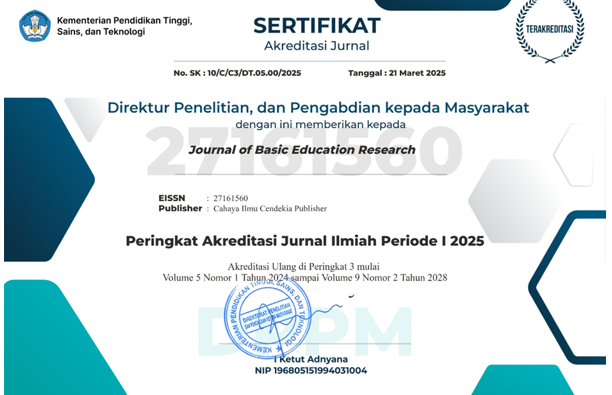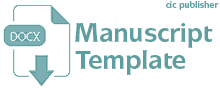Speed Meets Accuracy: Effectiveness of Left to Right Method on Mental Addition and Subtraction Skills of Elementary Students
Abstract
Purpose of the study: This study developed and validated Home-Based Learning Activities (H-BLA) for teaching Physics inspired by the identified Most Essential Learning Competencies (MELCs) by the Department of Education (DepEd). Acknowledging the significance of adaptive and suitable learning materials.
Methodology: The researchers employed the descriptive-developmental method to create and assess the developed home-based learning activities. The Learning Resources Management and Development System (LRMDS) evaluation tool of the Department of Education (DepEd) for printed materials is used and experts agreed that the developed H-BLA met the standards for printed learning materials.
Main Findings: The expert validation revealed that the Home-Based Learning Activities (H-BLA) were highly acceptable in terms of content, format, accuracy, and up-to-datedness of information, with Factors 1, 2, and 4 receiving 'very satisfactory' ratings. However, the presentation and organization, corresponding to Factor 3, received only a 'satisfactory' rating, indicating room for improvement in the structure and flow of the materials.
Novelty/Originality of this study: The study's novelty lies in developing validated Home-Based Learning Activities (H-BLA) for elementary Physics under the K-12 curriculum, utilizing accessible materials to foster independent learning. Grounded in Constructivist Theory, Dale's Cone of Experience, and Contextualized Teaching and Learning, it promotes experiential education. Expert validation and iterative improvement ensure quality, addressing gaps in remote and practical science education.
References
A. Benjamin and M. Shermer, secrets of mental math: the mathemagician’s guide to lightning calculation and amazing math tricks, 1st ed., vol. 3. New York, NY, USA: Three Rivers Press, 2006, pp. 27–38.
T. Nunes, P. Bryant, and A. Watson, “Key Understandings in Mathematics Learning,” Nuffield Foundation, 2009.
R. Z. Zheng and U. Gupta, “Cognitive load in solving mathematics problems: Validating the role of motivation and the interaction among prior knowledge, worked examples, and task difficulty,” Eur. J. STEM Educ., vol. 5, no. 1, p. 05, Nov. 2020, doi: 10.20897/ejsteme/9252.
A. J. Baroody, “Why children have difficulties mastering the basic number combinations and how to help them,” Teach. Child. Math., vol. 13, no. 1, pp. 22–31, 2006.
I. Thompson, “Mental calculation strategies for addition and subtraction. Part 1,” Math. Sch., vol. 28, no. 5, pp. 2–4, 1999, doi: 10.2307/30215422.
M. Beishuizen, “Mental strategies and materials or models for addition and subtraction up to 100 in Dutch second grades,” J. Res. Math. Educ., vol. 24, no. 4, pp. 294–323, 1993, doi: 10.2307/749464.
R. Sharma and C. Shukla, “Constructivist approach in education: Projecting the insights of Piaget and Vygotsky into future,” Int. J. Res. Cult. Soc., vol. 7, no. 3, p. 79, 2023, doi: IJRCS202303016.
F. Paas and P. Ayres, “Cognitive load theory: A broader view on the role of memory in learning and education,” Educ. Psychol. Rev., vol. 26, no. 2, pp. 191–195, 2014, doi: 10.1007/s10648-014-9263-5.
R. Abecia, “Matatag mathematics cg grades 1, 4, and 7,” Department of Education, Philippines, 2024.
Republic of the Philippines, Enhanced Basic Education Act of 2013, vol. 2, 2013
Republic of the Philippines, Governance of Basic Education Act of 2001, vol. 2, 2001.
J. W. Creswell and J. D. Creswell, Research Design: Qualitative, Quantitative, and Mixed Methods Approaches, 5th ed. Thousand Oaks, CA, USA: SAGE Publications, 2018.
J. H. McMillan and S. Schumacher, Research in Education: Evidence-Based Inquiry, 7th ed. Boston, MA, USA: Pearson, 2014.
J. R. Fraenkel, N. E. Wallen, and H. H. Hyun, How to Design and Evaluate Research in Education, 10th ed. New York, NY, USA: McGraw-Hill Education, 2019.
L. A. Palinkas, S. M. Horwitz, C. A. Green, J. P. Wisdom, N. Duan, and K. Hoagwood, “Purposeful sampling for qualitative data collection and analysis in mixed method implementation research,” Adm. Policy Ment. Health, vol. 42, no. 5, pp. 533–544, 2015, doi: 10.1007/s10488-013-0528-y.
R. E. Slavin, “How evidence-based reform will transform research and practice in education,” Educ. Psychol., vol. 55, no. 1, pp. 21–31, 2020, doi: 10.1080/00461520.2019.1681926.
L. Darling-Hammond, L. Flook, C. Cook-Harvey, B. Barron, and D. Osher, “Implications for educational practice of the science of learning and development,” Appl. Dev. Sci., vol. 24, no. 2, pp. 97–140, 2020, doi: 10.1080/10888691.2018.1537791.
K. M. J. Macaso and R. G. Dagohoy, “Predictors of performance in mathematics of science, technology, and engineering students of a public secondary school in the Philippines,” J. Social, Humanity, and Educ., vol. 2, no. 4, pp. 311–326, Aug. 2022, doi: 10.35912/jshev2i4.990.
D. M. V. Salac, “PRESENT: An Android-based class attendance monitoring system using face recognition technology,” Int. J. Comput. Sci. Res., vol. 2, no. 3, pp. 102–115, Dec. 2018, doi: 10.25147/ijcsr.2017.001.1.28.
J. M. Loberes, A. C. Jalmasco, and N. J. Lasala, “Interactive story for teaching ecosystem topics using Twine application for elementary school students,” J. Basic Educ. Res., vol. 6, no. 2, pp. 66–78, May 2025. doi :10.37251/jber.v6i2.1480
A. Field, Discovering Statistics Using IBM SPSS Statistics, 5th ed. London, U.K.: SAGE Publications, 2018.
N. M. Razali and Y. B. Wah, “Power comparisons of Shapiro-Wilk, Kolmogorov-Smirnov, Lilliefors and Anderson-Darling tests,” J. Stat. Model. Anal., vol. 2, no. 1, pp. 21–33, 2011.
M. Chesney, “Mental computation strategies for addition: There's more than one way to skin a cat,” Aust. Prim. Math. Classroom, vol. 18, no. 1, pp. 36–40, 2013.
C. Csikos, “Strategies and performance in elementary students' three-digit mental addition,” ResearchGate, 2016.
R. Ziatdinov and S. Musa, “Rapid mental computation system as a tool for algorithmic thinking of elementary school students' development,” arXiv preprint, arXiv:1305.4443, 2013.
S. Caviola, I. C. Mammarella, M. Pastore, and J.-A. LeFevre, “Children's strategy choices on complex subtraction problems: Individual differences and developmental changes,” Front. Psychol., vol. 9, Art. no. 1209, 2018. doi: 10.3389/fpsyg.2018.01209
R. N. D. Robert and J. A. LeFevre, “Ending up with less: The role of working memory in solving simple subtraction problems with positive and negative answers,” Res. Math. Educ., vol. 15, no. 2, pp. 165–176, 2013. doi:10.1080/14794802.2013.797748
L. N. Tronsky, M. McManus, and E. C. Anderson, “Strategy use in mental subtraction determines central executive load,” Am. J. Psychol., vol. 121, no. 2, pp. 225–236, 2008.
S. Gray, “Try Left to Right Addition: A Powerful Mental Math Strategy,” Shelley Gray, 2024.
Manchester Global School, “The Power of Mental Math: Benefits and Real-World Applications,” Manchester Global School. 2025.
P. Bryant and T. Nuñes, “Children’s understanding of mathematics,” in The Wiley‐Blackwell Handbook of Childhood Cognitive Development, 2nd ed., Hoboken, NJ, USA: Wiley, 2010, pp. 549–573, doi: 10.1002/9781444325485.ch21.
B. Rosenshine, “Principles of instruction: Research-based strategies that all teachers should know,” Am. Educ., vol. 36, no. 1, pp. 13–14, 2012.
O. Chen, E. Retnowati, B. K. Y. Chan, and S. Kalyuga, “The effect of worked examples on learning solution steps and knowledge transfer,” Educ. Psychol., vol. 43, no. 8, p. 13, Sep. 2023, doi: 10.1080/01443410.2023.2273762.
G. Shabiralyani, K. Hasan, N. Hamad, and N. Iqbal, “Impact of visual aids in enhancing the learning process: Case research from District Dera Ghazi Khan,” J. Educ. Pract., 2015.
R. J. Gestiada, F. J. Tisoy, and N. Lasala Jr, “The 360˚ view: Contextualized virtual reality tours as innovative teaching tool in ecology for elementary school students,” J. Basic Educ. Res., vol. 6, no. 1, 2025, doi: 10.37251/jberv6i1.1213.
N. L. Lasala Jr, “Students’ intrinsic motivation using game-based activities,” DLU JOS, vol. 14, no. 2, pp. 50–70, Mar. 2024, doi: 10.37569/DalatUniversity.14.2.1161(2024).
S. Chen, D. Liu, H. Yan, and Y. Ma, “The effect of a schema-based method on correcting persistent errors in mental arithmetic: An experimental study,” Front. Psychol., vol. 15, Art. no. 1276914, 2024. doi: 10.3389/fpsyg.2024.1276914
N. Kala and A. Ayas, “Effect of instructional design based on cognitive load theory on students’ performances and the indicators of element interactivity,” J. Turk. Sci. Educ., vol. 20, no. 3, pp. 468–489, 2023. doi: 10.36681/tused.2023.027
M. G. Skinner and J. A. Cuevas, “The effects of schema-based instruction on word-problems in a third-grade mathematics classroom,” Int. J. Instr., vol. 16, no. 1, pp. 855–880, 2023. doi: 10.29333/iji.2023.16148a
Y. R. Yeni, H. Syarifuddin, and R. Ahmad, “The effect of contextual teaching and learning approach and motivation of learning on the ability of understanding the mathematics concepts of grade V student,” IOP Conf. Ser.: Earth Environ. Sci., vol. 314, no. 1, p. 012064, 2019. doi: 10.1088/1755-1315/314/1/012064
C. Björklund and U. Runesson Kempe, “Strategies informed by various ways of experiencing number relations in subtraction tasks,” J. Math. Behav., vol. 67, p. 100994, 2022. doi: 10.1016/j.jmathb.2022.100994
I. Sultana, Teacher Perceptions of the Use of Cognitively Guided Instruction in Mathematics Classrooms, Ph.D. dissertation, Walden Univ., 2022.
N. J. Lasala, “Development and validation of E-SelfIMo: E-learning self-directed interactive module in Earth Science,” Recoletos Multidiscip. Res. J., vol. 11, no. 1, pp. 85–101, 2023, doi: 10.32871/rmrj2311.01.07.
M. Fullan, The New Meaning of Educational Change, 4th ed. New York, NY, USA: Teachers College Press, 2007, p. 271.
D. Liu, X. Tan, H. Yan, and W. Li, “Improving mental arithmetic ability of primary school students with schema teaching method: An experimental study,” PLoS ONE, vol. 19, no. 4, Apr. 2024, doi: 10.1371/journal.pone.0297013.
Copyright (c) 2025 Pia Gail Bercasio, Nestor Jr Lasala, Ryan Dio

This work is licensed under a Creative Commons Attribution 4.0 International License.
Authors who publish with this journal agree to the following terms:
- Authors retain copyright and acknowledge that the Journal of Basic Education Research is the first publisher licensed under a Creative Commons Attribution 4.0 International License.
- Authors are able to enter into separate, additional contractual arrangements for the non-exclusive distribution of the journal's published version of the work (e.g., post it to an institutional repository or publish it in a book), with an acknowledgment of its initial publication in this journal.
- Authors are permitted and encouraged to post their work online (e.g., in institutional repositories or on their website) prior to and during the submission process, as it can lead to productive exchanges and earlier and greater citation of published work.





.png)


.png)
.png)


















